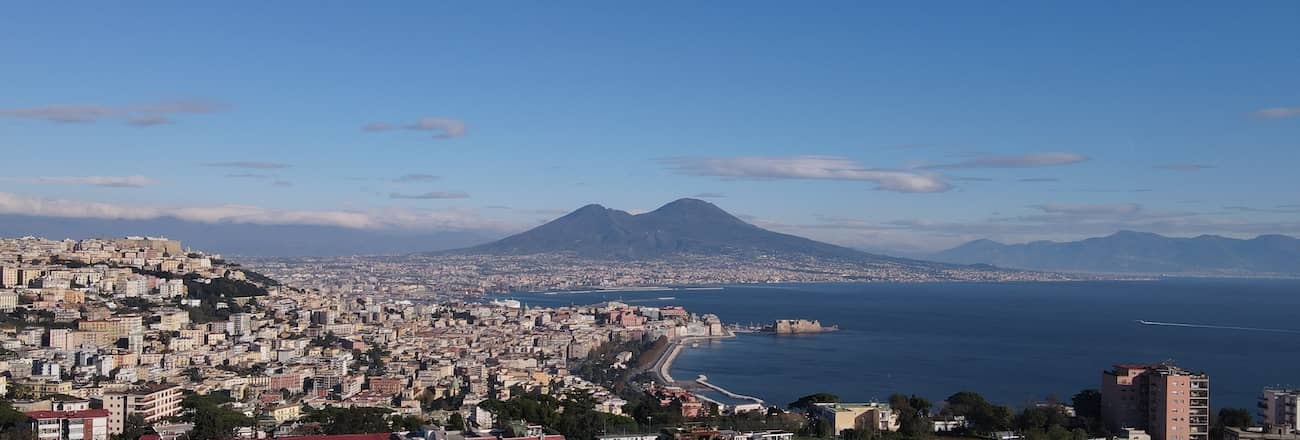
Campania
Visit Campania, land of emotions, contrasts and millenary traditions
Things to do in Campania
All the experiences and attractions for the most popular activities.
Territory of Campania
Campania is a region in southern Italy. It is the third largest region in terms of population (after Lombardy and immediately after Lazio), the most populous in southern Italy and the first in terms of density.
Wedged between the Tyrrhenian Sea to the west and the southern Apennines to the east, the region borders Lazio to the northwest, Molise to the north and Puglia and Basilicata to the east. Campania is mainly hilly (50.8%), 34.6% of it is mountainous and 14.6% flat.
Useful information about Campania
In addition to the regional capital of Naples, the provincial capital cities are Avellino, Benevento, Caserta and Salerno. Along the coast of Campania there are four gulfs: the Gulf of Gaeta, the Gulf of Naples, the Gulf of Salerno and the Gulf of Policastro.
Top Attractions in Campania
all entrance tickets for the most popular Italian attractions
Capri
NaplesPompeii Ruins
NaplesVesuvius
NaplesVeiled Christ
NaplesPaestum Archaeological Park
NaplesRoyal Palace of Caserta
NaplesPoseidon Thermal Gardens
NaplesSan Carlo Theatre in Naples
NaplesNaples Undergorund
NaplesSan Lorenzo Maggiore
NaplesFerriere Waterfalls
NaplesCapri boat tour
CapriNaples Pass
Save money and enjoy the best of the city with the Naples Pass
Buy now from 35.00 €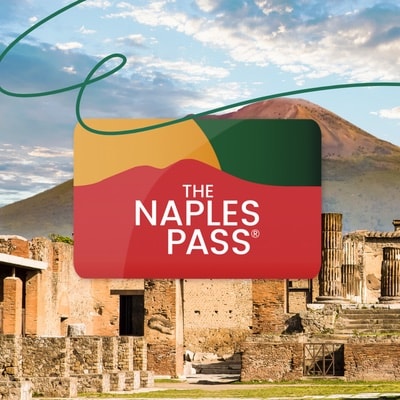
Top Destinations in Campania

Looking for tips for your next trip? Ask Monna Lisa.

Discover the Italian Ambassador of Excellence in this region
Places and tours of Campania
The Neapolitan Sistine Chapel
⏳ 4 mins
Campania offers breathtaking landscapes and scenery, from the mountains to the coast, passing through lakes and volcanoes. The region has 4 volcanoes, including the most famous and still active, Vesuvius. The most famous islands of Ischia, Capri and Procida are attractive for tourists from all over the world, such as the Sorrento coast and the Amalfi coast.
The region includes four areas that are historically, culturally and morphologically different from each other. Starting from the north, the sub-regions are: Terra di Lavoro, Sannio, Irpinia, and Cilento.
Avellino, Benevento, Caserta and Salerno are just some of the other destinations to visit in this magnificent region.
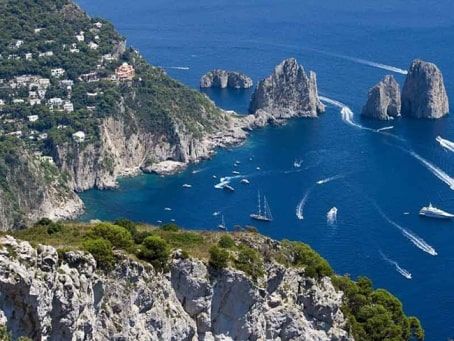
Food and flavours of Campania
The cuisine of Campania is one of the most appreciated in the world, being able to export numerous products recognized at national and European level. Its cuisine, part of the Mediterranean diet, has been protected by UNESCO as an intangible heritage of humanity.
The Neapolitan Pizza is the symbol of regional (and national) cuisine and is exported worldwide, in fact, since 2017 the art of Neapolitan pizzaiuolo has been declared by UNESCO as an intangible heritage of humanity. Other typical dishes of the Campania cuisine are: the cardone (typical dish of the province of Benevento), the pasta with beans typical of the province of Benevento, the caprese (Naples), the soup maritata (Benevento), octopus 'alla luciana' (Naples), spaghetti allo Scoglio (Naples), pasta with beans and mussels (Naples), paccheri al ragù (Naples), chocolate aubergines (Salerno), maccaronara (Castelvetere sul Calore - Avellino), crusìcchi (Salerno), mugnatiello (Benevento). The confectionery tradition is also very vast, just think of Baba, Chiacchiere, Delizia al limone, Struffoli, Sfogliatella, Pastiera and Biscotti di Castellammare.
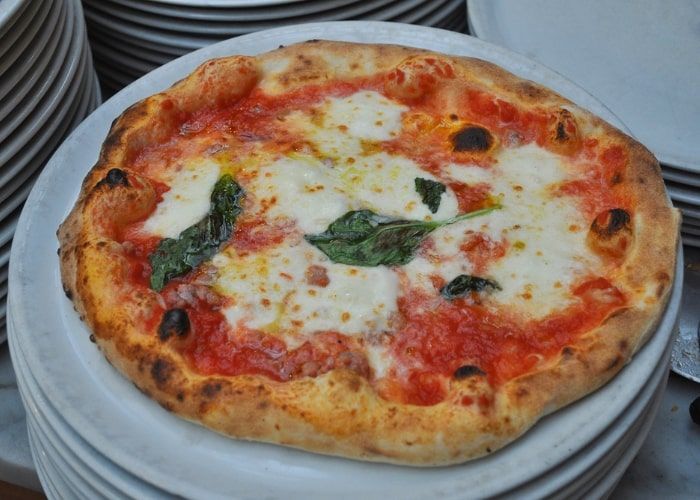
Tour and Experiences in Campania
Unesco Sites in Campania
Art and culture of Campania
In the course of its history, Campania has repeatedly had roles of primary importance in the local and supraregional spheres. This has led to the development of an important combination of popular and artistic culture. Thanks to its historical, artistic, archaeological, architectural and religious contents and thanks to the immense and extraordinary artistic heritage present in Naples, Campania is one of the regions with the highest density of cultural resources in Italy.
_001.jpg)
Stories and traditions of Campania
The human population of Campania has been attested since the Palaeolithic. The region was the subject of Greek colonization where Pithecusa (Ischia), first Parthenope and then Neapolis (Naples) and many other cities such as Poseidonia (Paestum) were founded. Campania became one of the most important cultural centers of Magna Graecia.
After the Greeks the region was colonized by the Roman Empire and from the economic point of view there was an extraordinary development of agriculture and trade, the region was in fact always one of the richest areas of the classical and Roman world and this led it to the nickname of Campania Felix.
After the war of Polish succession and the Austrian parenthesis, Campania passed to the reign of the Bourbons of Naples. During the reign of the two Sicilies, Campania obtained records and historical innovations, bringing the entire region to be one of the most powerful in Europe. In 1861 the region was conquered and annexed to the Kingdom of Italy.

Exhibitions, events and shows in Campania
What to do in Naples in January 2026
⏳ 3 mins
Campania Region
Campania is the most densely populated region of southern Italy. Known for its archaeological ruins, cities of art and natural beauty, it's home to ten UNESCO sites.
The Tyrrhenian Sea washes a coast that extends for about 487 km and which includes not only the famous Gulf of Naples, but also those of Policastro, Gaeta and Salerno.
Inland, the Campania region borders with Lazio, Molise, Puglia and Basilicata.
The etymology of the name generally goes back to the Latin word campus. In ancient times this region was also nicknamed Campania Felix, where felix, meaning both happy and lucky, alluded to a fertile land, a mild climate and a place of great economic and cultural wealth. It was the historian Pliny the Elder the first to use this definition, before dying in the famous eruption of Vesuvius in 79 AD. the same that handed over to history two of the most important archaeological sites in the world: Pompeii and Herculaneum.
According to others, the name came from the Oscan population, who called the area around the city of Capua Kampanom. What is certain, however, is that these lands were inhabited since the remotest antiquity and that Pliny had not gone too far. Campania was a truly fertile land and since the dawn of its history it has been a crossroads of cultures, civilizations and commerce.
The artifacts found in the mountainous areas of the Apennines testify to the presence of man starting from the Paleolithic. The presence of Indo-European populations, such as the Osci and the Samnites, who lived in the innermost areas, dates back to the 1st millennium BC.
The plains were inhabited by the Etruscans, another great civilization of which important testimonies remain especially near Capua. The coast, on the other hand, was chosen by the Greeks, whose presence significantly marked Campania's history, the geography of its cities and the language. Traces of ancient Greek, in fact, are still very present in local dialects, as well as in the Italian language. The Greeks also owe the first foundation of the regional capital, Naples, known at the time as Parthenope. They even founded the colonies of the island of Ischia, already inhabited by the Carthaginians, of Cuma, Pozzuoli, Paestum and many other major cities.
Thus, Campania became one of the major cultural centres of Magna Graecia, and also heavily influenced the culture of the Roman Empire that was to be born shortly thereafter. The remains of the ancient Greek civilization are innumerable, and present basically throughout the region.
Even today, for example, in Naples centre, you can walk along the same streets built more than two thousand years ago, according to the chessboard layout typical of Greek/Roman town planning.
Only barely the Romans managed to settle in Campania, between the 2nd and 1st century BC. and in time their presence transformed it into one of the richest regions of the empire. Furthermore, many Roman nobles loved to spend their holidays in the warm Mediterranean sun, and some of their awesome villas can still be visited along the coast. The last ruler of the Western Roman Empire, Romulus Augustus, died in Naples.
In the following centuries Campania was invaded, disputed and conquered. The Byzantine Empire had to share it with the Lombards in the 5th century AD. It was then the turn of the Normans, who gradually conquered the region starting from 1022. Later, under the crown of the Angevins, Campania became the heart of the rich and powerful Kingdom of Naples only to change hands once again, when the Aragonese reigned and Campania became one of the major European centres of Renaissance.
The years between 1503 and 1734 are those in which Campania became the viceroyalty of Spain. Soon after even the Austrians conquered it, albeit just for a short time, but it was with the Bourbons of Spain that Naples returned to be the capital of a free kingdom and that Campania was enriched with marvellous buildings and innovative creations. The construction of the Royal Palace of Caserta dates indeed back to this period, while the famous silk district of San Leucio became the first socialist experiment in history.
In 1799 Naples, following the Napoleonic wars, was for a short time a republic, but the experience ended in bloodshed. With the Bourbons back to the throne, Campania reached again several records. In Pietrarsa, where today there is an important railway museum, the first engineering center in Italy was founded. Naples and Castellammare di Stabia instead had the primacy for the naval industry. In Campania the first suspension bridges in Italy were built, so were the first railway with the first stations, the first electric lighting system for the cities and the first state shelter for the poor, which is still today one of the most important monuments of Naples. Art schools or conservatories arose everywhere and the region was also the first where a pension system was implemented.
In 1861 Campania was finally annexed to the newborn Kingdom of Italy.
Bombed and rebuilt both after the First World War and after the Second, it still managed to get the first metro railway in Italy which connected Naples to Pozzuoli in 1925.
Today, despite a lesser development compared to other Italy's regions and a heavy emigration, Campania still remains one of the first tourist destinations in Italy. Each of its five provinces, Naples, Caserta, Avellino, Salerno and Benevento, has an immense heritage.
About 25% of the territory is covered by protected natural areas, such as the Vesuvius National Park, or that of Cilento and Vallo di Diano. There are also protected marine areas such as Punta Campanella, the underwater parks of Baia and of Gaiola, which are located in Naples.
Most of the land is hilly. The plains are very few and cover only a fifth of the region. One of them is Cilento, where, among other things, some of the most beautiful beaches in Italy can be found. Near Salerno there is also the plain of Paestum with some important archaeological sites.
The mountains, never particularly high, cover about 34% of the territory. Some of the major peaks are found along the Apennine ridge, while near the coast there are the Lattari Mountains, which loom over the Amalfi coast and offer some of the most beautiful views ever.
As for Vesuvius, the mountain that characterizes Naples landscape, it's a quiescent volcano 1281 meters high.
Another relevant volcanic area, both from a historical and a naturalistic point of view is Campi Flegrei, which includes Pozzuoli with the Solfatara, where there is a still active crater. The same goes for Lake Averno, the caldera of a volcano already well known to the ancients who considered it the door to the underworld. The island of Ischia is also part of the same volcanic system; it's in fact famous for its thermal baths.
The Campania coast, high and rocky more often than not, has places celebrated throughout the world for their beauty, in particular between Naples and Salerno where the Amalfi Coast immediately follows the Sorrento Peninsula. In addition to the three largest and most famous islands, Capri, Ischia and Procida, there are four more, that are much smaller than the others.
In front of Positano, for example, there is a tiny archipelago known as Li Galli. Vivara is instead a small, wonderful naturalistic oasis almost attached to Procida. Finally, Nisida and Megaride are two small islands in the Gulf of Naples, now connected to the mainland. Megaride, in particular, was the first Greek settlement, from which Naples was born. Today it houses Castel dell'Ovo, one of the city's most beautiful castles, under whose foundations the mermaid Partenope, symbol of Naples, is said to be buried. According to the legends, she died of grief after being abandoned by Ulysses.







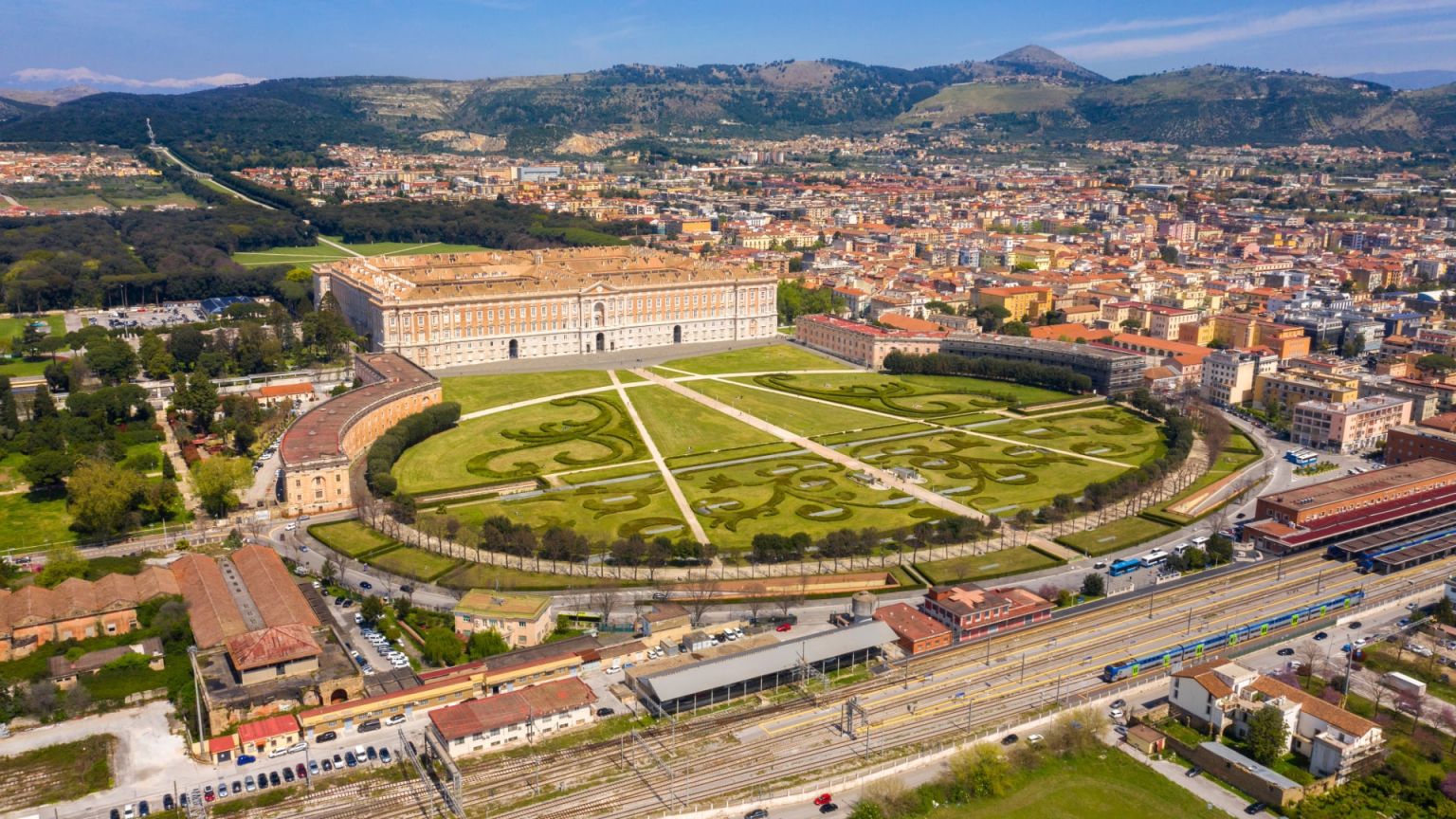
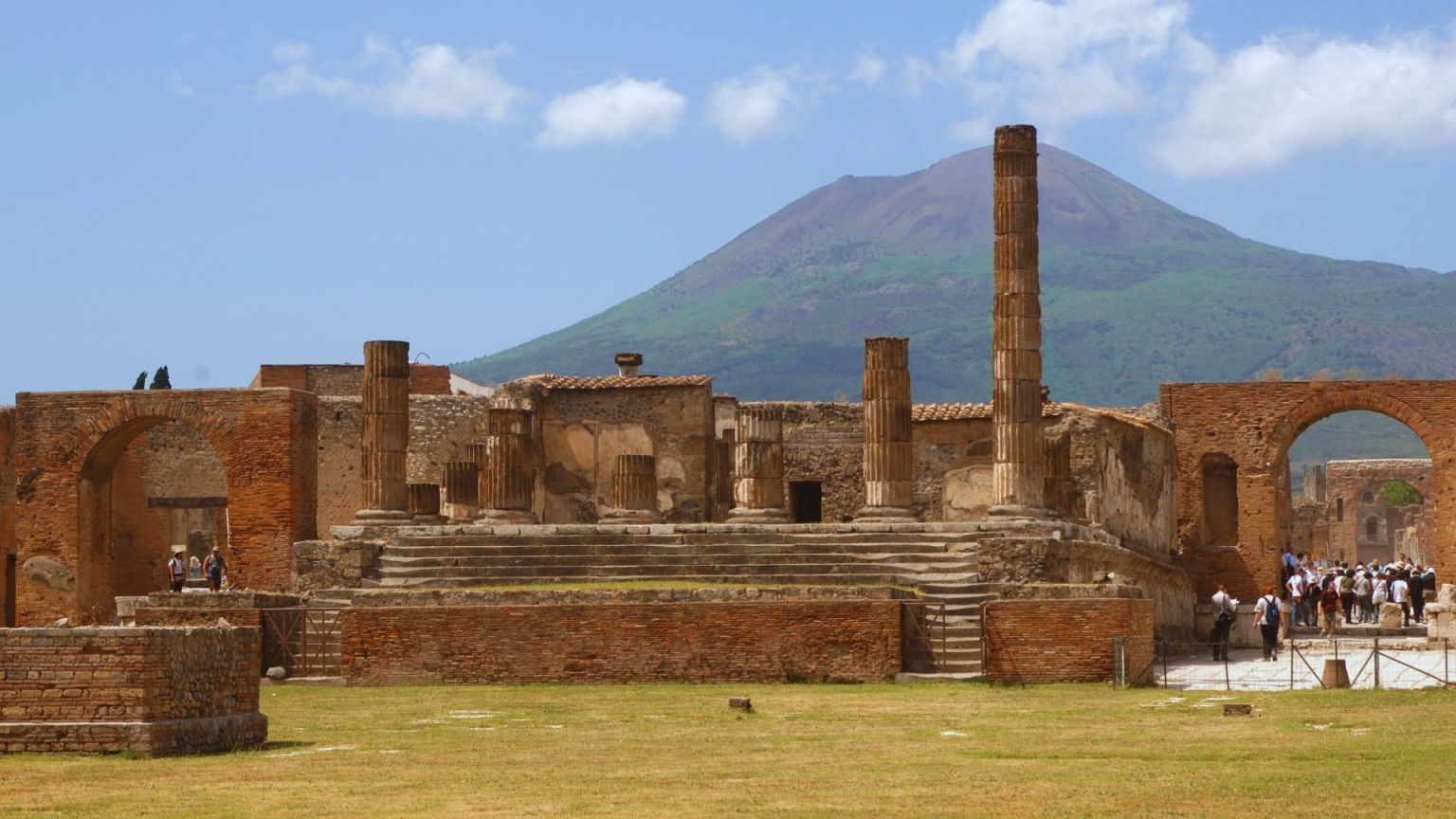



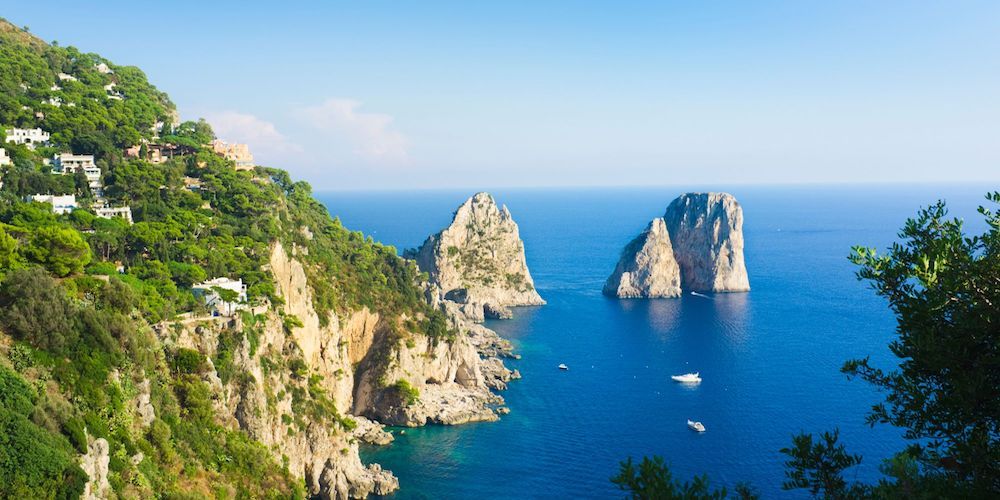
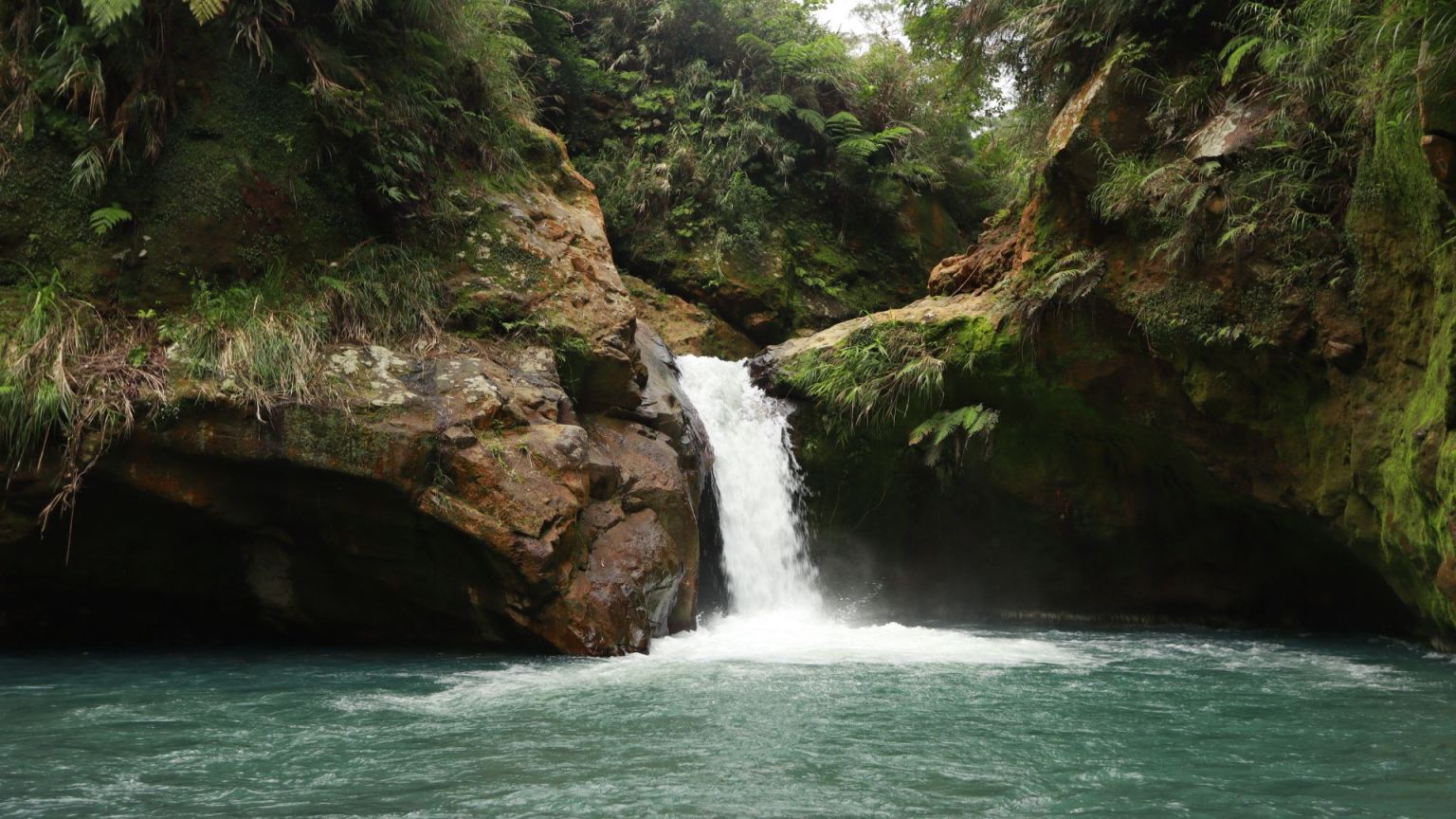
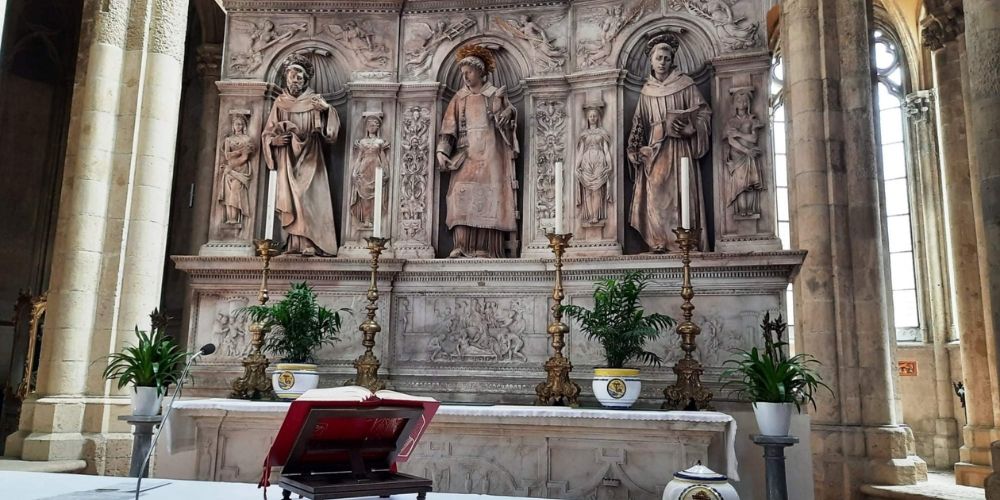
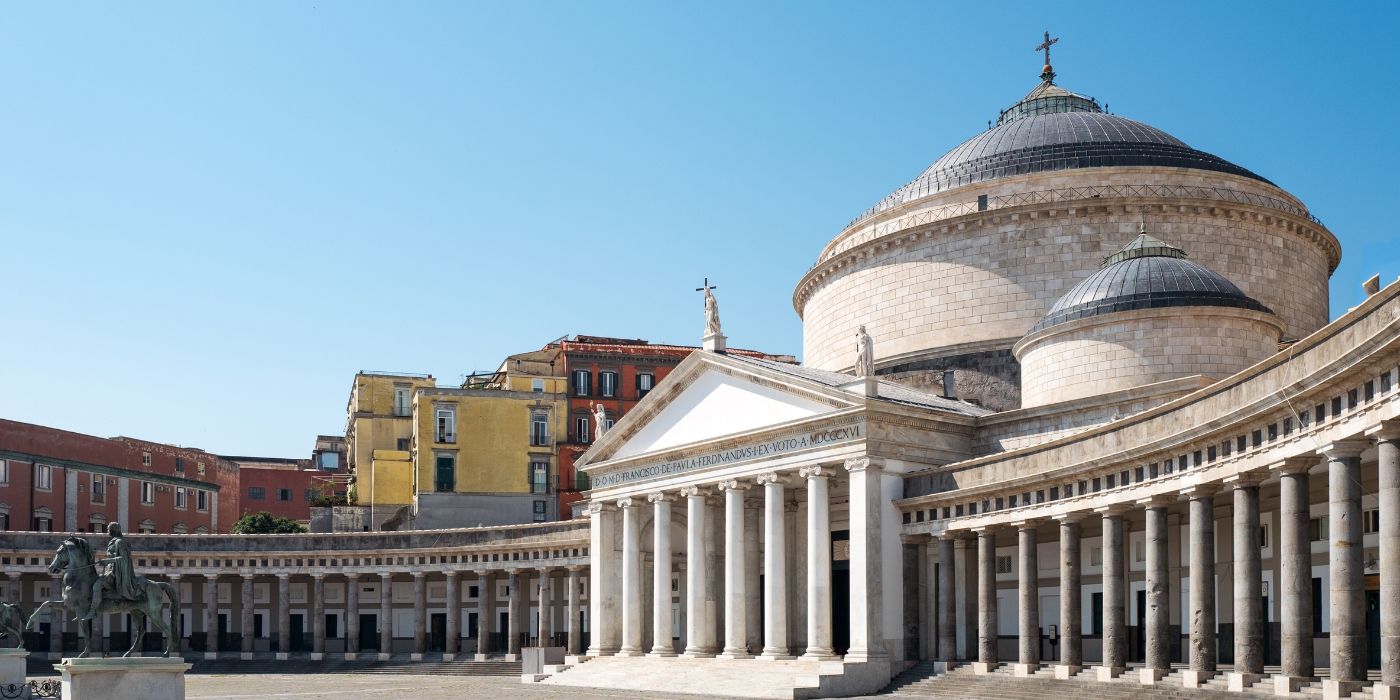
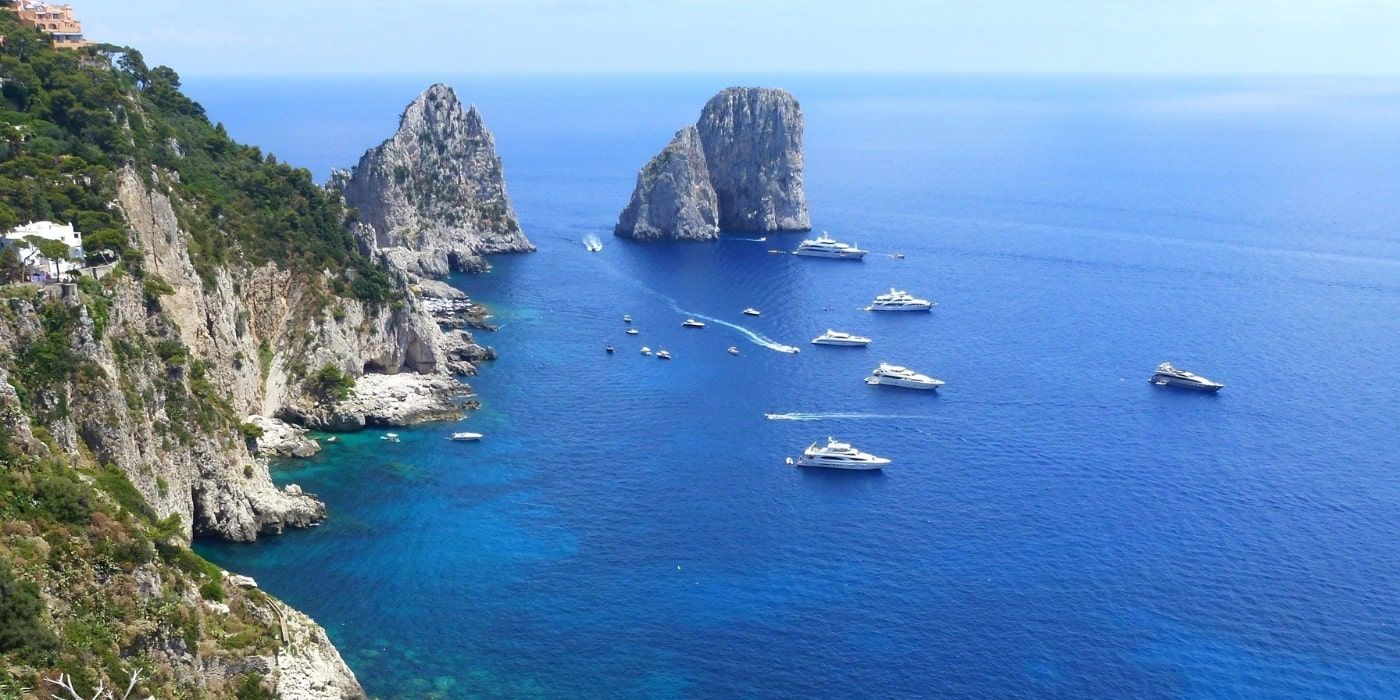
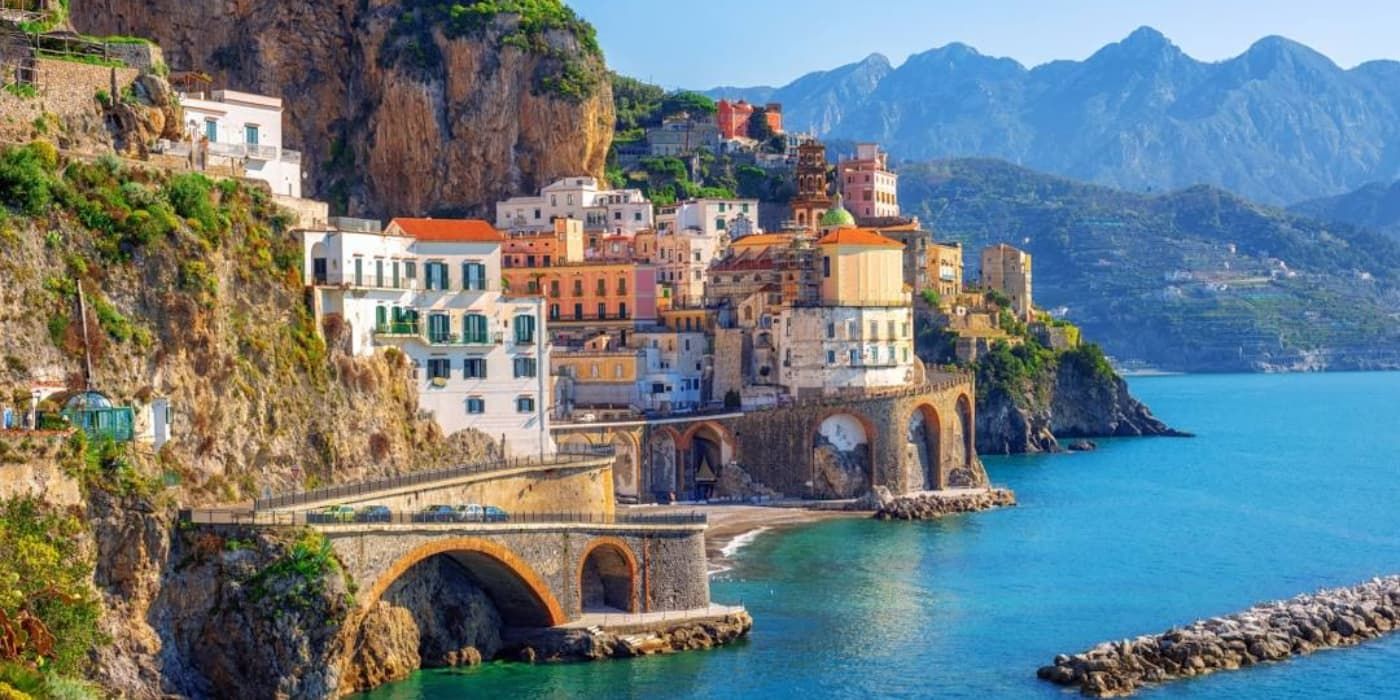
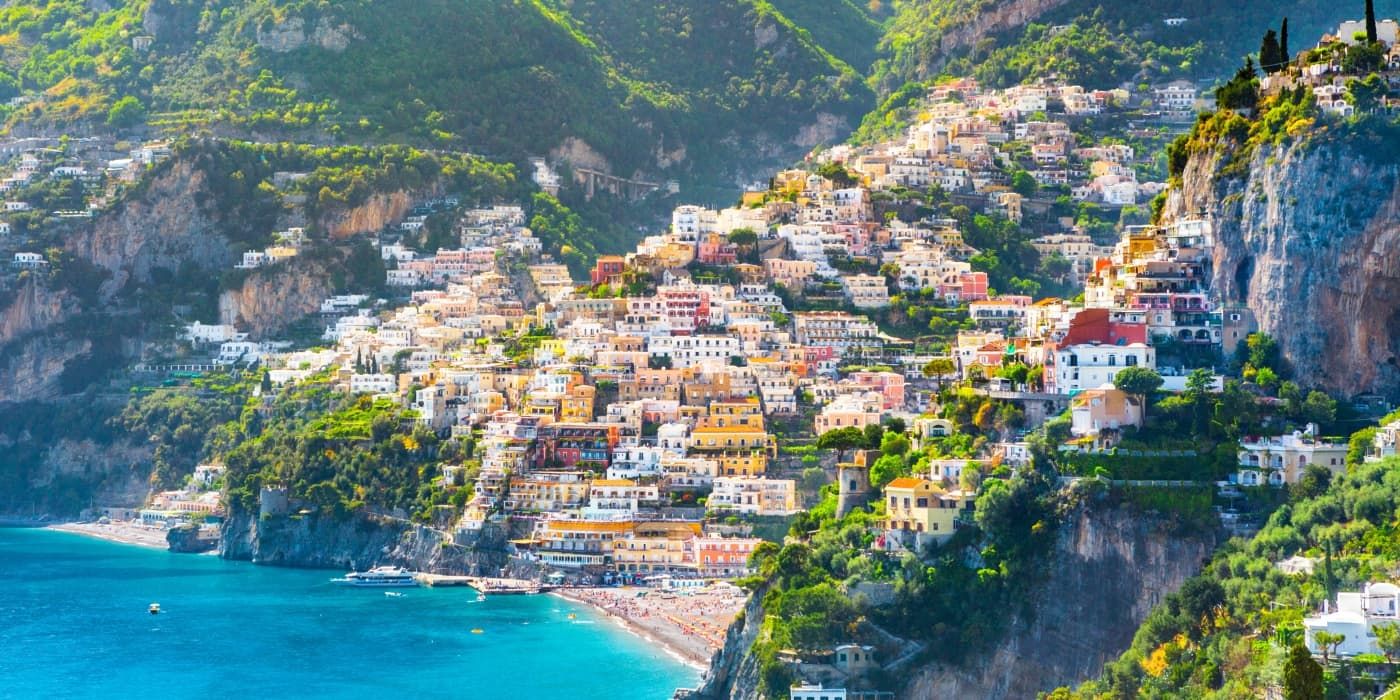


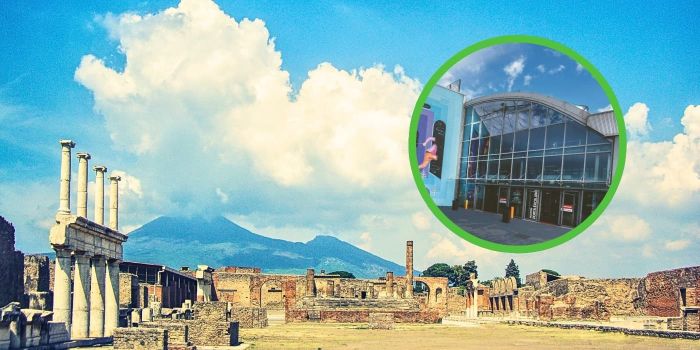







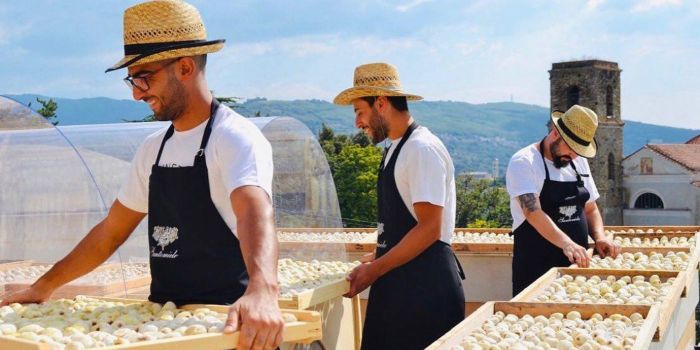








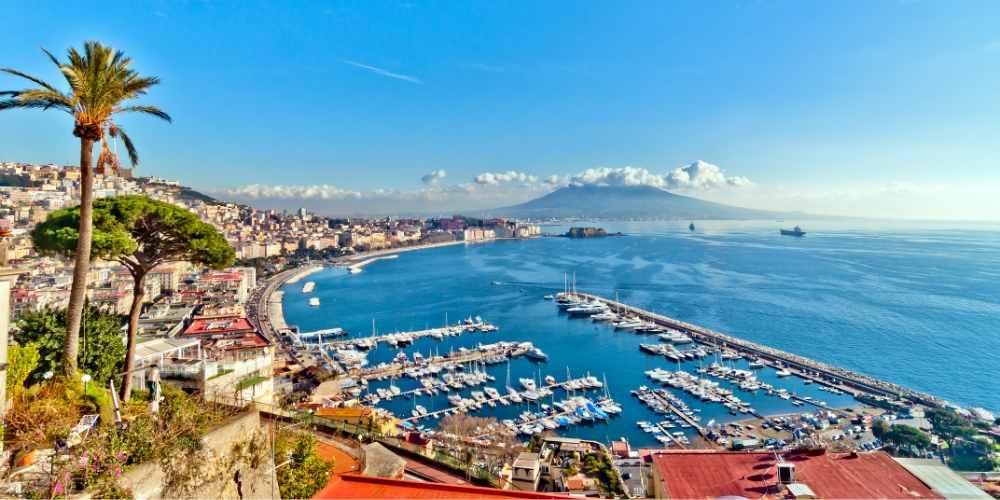














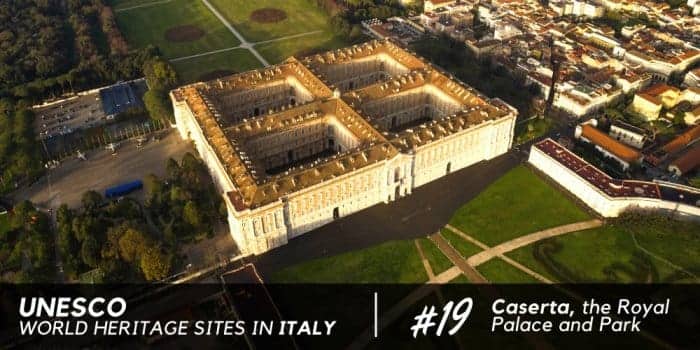





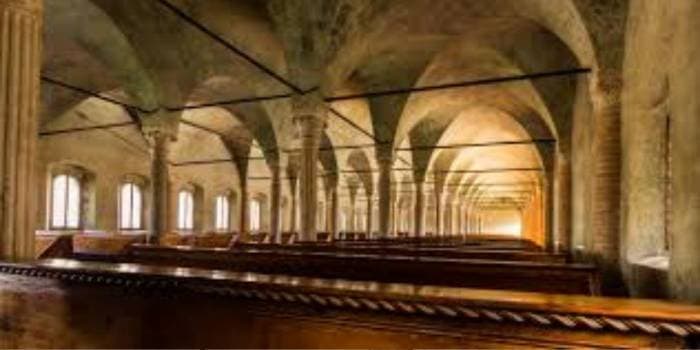




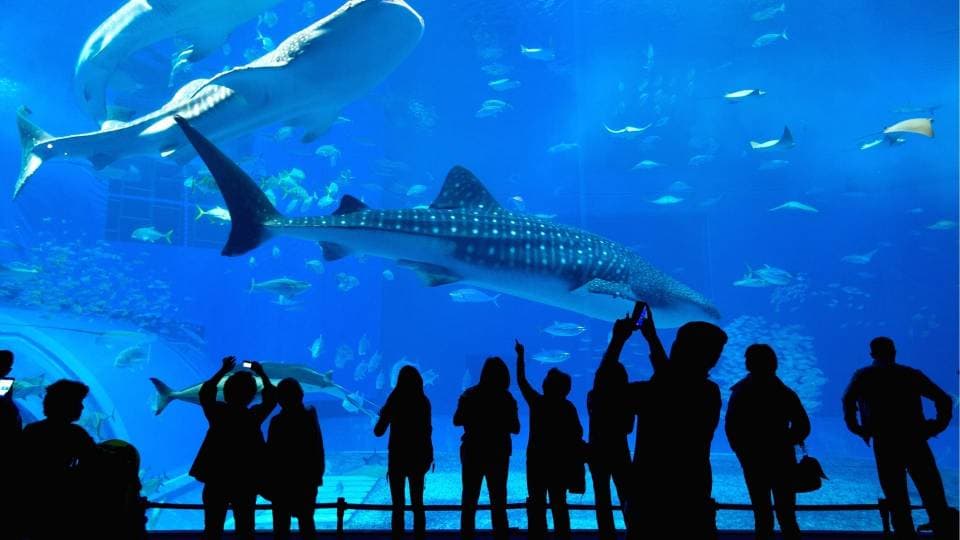




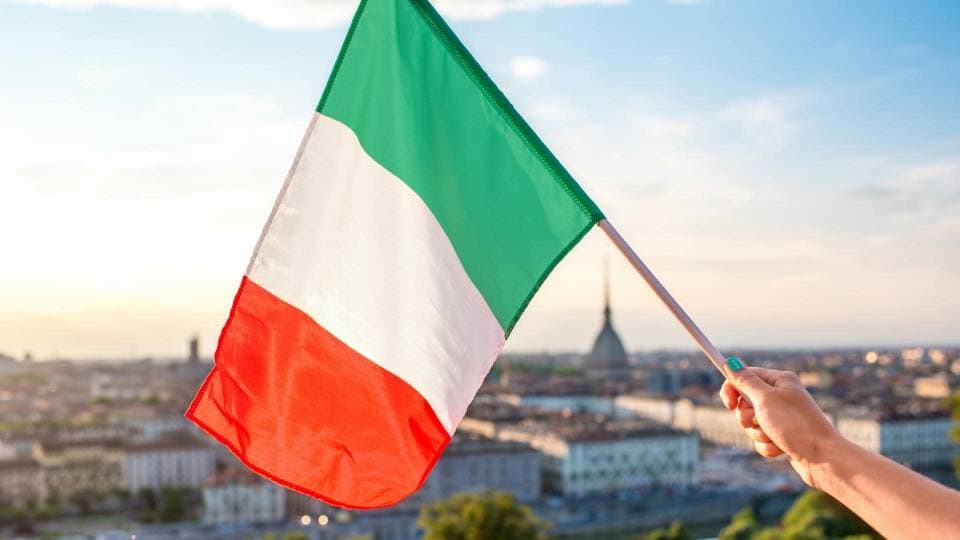




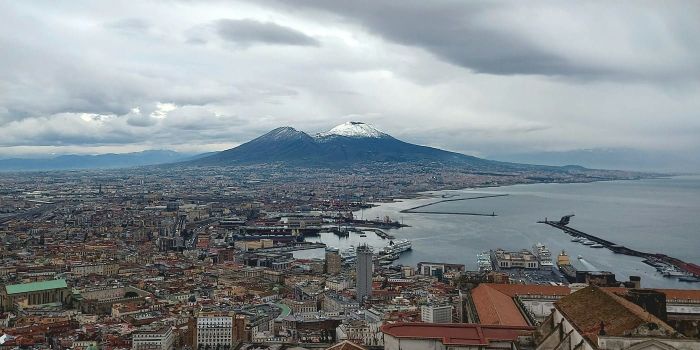
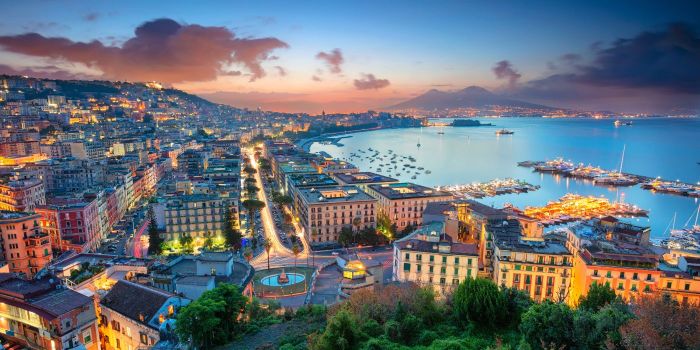








Ciao! I'm Monna Lisa, your digital travel designer. I'm here to help you plan your perfect trip to Italy.